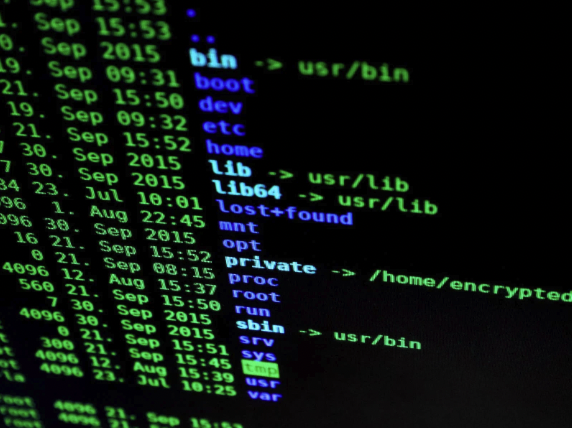The innovations in software development are almost matched by equally ingenious incursions into the software supply chain in the modern era. It’s almost as if there’s competition among hackers to see who can make the biggest malicious impact on software pipelines.
Headlining breaches of SolarWinds and Codecov are a wake-up call to DevOps engineers and software developers to take added steps to secure their workflow processes. These breaches demonstrate the risk that existing, undetected vulnerabilities can have in the software supply chain.
These code vulnerabilities can allow hackers to insert malware into the build process, with said malware working its way further along the pipeline through testing, signing, packaging, and deployment.
This could result in the whole-scale collapse of software infrastructure, or significant data theft that leaves end-users and customers at risk
This is why it’s so important for developers to take definitive steps to protect code integrity in software pipelines. However, one might wonder how these breaches creep in. Read on to find out.
Table of Contents
The risk to code integrity
Modern-day software development environments are fast-paced, as there’s the need to build, release updates and deploy with speed and efficiency.
As a result, many organizations use third-party software and code libraries rather than building everything from scratch. While it’s an effective solution, it is the primary means through which code integrity may be compromised.
Outdated code and code with bugs may be unwittingly introduced into the production pipeline and remain undiscovered until severe damage is done.
So, it’s important to protect the integrity of software source code. To this effect, we present a comprehensive list of 7 solutions.
Let’s check them out
Integrate security at each stage of CI/CD
Many DevOps and software development teams are primarily concerned with keeping release duration at the barest minimum. That is to say, productivity is seen as the speed at which these organizations can churn out new software and updates.
For this reason, security testing is often an afterthought factored in at the end of the SDLC. This practice increases the risk of the software supply chain having inherent vulnerabilities.
One way to ensure the integrity of software code is to keep security in mind and integrate appropriate cybersecurity practices at every level of the SDLC.
However, continuous integration and delivery security practices should not be cumbersome. Rather, they should be integrated into the development workflow.
Use an all-in-one software supply chain security solution
The right software solution can provide you with continuous code assurance at every stage of the software development life cycle.
With it, you can build transparency by sharing provenance information, vulnerabilities, and code integrity with the other collaborators in your software supply chain. You can also enforce and monitor each workflow process, ensuring that your security practices adhere to standards such as the NIST 800-218 Secure Software Development Framework.
All-in-one tools like Scribe Security Code Assurance guarantee consistent code integrity at each stage of the process, so you don’t have to worry about an unplanned alteration of code in the CI/CD pipeline or just before deployment.
Secure connects and map threats
To secure your software code’s integrity, it’s essential to analyze potential threats and vulnerable points with the build and note which aspects of deployment require added security. By conducting a threat modeling exercise, you can easily identify and map potential pipeline threats and take steps to rectify them.
Another area of concern is the CI/CD pipeline connections. These points are usually a security risk; the solution is to scan and patch all the devices linked to the pipeline. If these devices fail security requirements, ensure that they’re blocked.
Also, all connections should be made using a secure protocol such as the TSL (Transport Layer Security), while repository and build server configurations should be equally secured.
Finally, ensure that scripted builds are scanned for security weaknesses.
Limit access control
Vulnerabilities are often introduced into the development process when access control needs to be tight enough.
To protect your code’s integrity, you should establish lists and rules regarding access control. Not everywhere should have access to every stage and process, so access control should be limited to only those whose functions intersect with the corresponding process.
Monitor, manage access and create a log for every pipeline resource with relevant information on the tasks, time, and roles involved. Additionally, regular audits ensure that redundant ex-employees and service and machine accounts have invalidated access permissions.
Ensure that passwords are strong- password rotation is an efficient technique. Finally, incorporate machine confirmation to secure bot access in containers.
Be discreet with sensitive information
In the software development process, certain classes of information should be treated as secret and kept safe as such.
Classified information includes passwords, usernames, encryption keys, SSH keys, tokens, and other authentication credentials that grant access to services and applications.
If these credentials aren’t aptly secured, malicious elements can take advantage of these vulnerabilities to grant themselves backdoor access and leave your code’s integrity at huge risk.
Establish secure practices regarding the location of these secrets and who can access them. For the latter, a key management service will suffice. This way, classified credentials are stored and encrypted and only injected during runtime when they’re in use. As such, they aren’t revealed during build and deployment and remain hidden from the source code.
You should also audit and monitor any code repositories, as more is needed to use a key management solution solely. This, you can isolate and remove sensitive details that have been inadvertently included in the source code.
Secure your code repository
If you use open-source code and self-host it on Git, you run vulnerability risks that could expose your CI/CD pipeline. Git is particularly resourceful to hackers because it contains intellectual property and proprietary source code. You must ensure secure access to the code repository to avoid being breached.
Security measures like signed commits and 2FA for author identification are ideal. At the same time, you can also define access roles based on the appropriate repository so that only valid users can access each repository.
You can also teach your developers how to use the Git inclusion strategy. Additionally, you can keep an equally secure local backup separate from the CI/CD process.
Secure third-party resources
Third-party code and software libraries are often a source of bugs and malware that could creep into your SDLC. You should ensure that such resources should pass through all the security measures highlighted above, such as cross-referencing against the provider’s official published version.
Additionally, you can configure drift detection to identify resources in the cloud that aren’t managed with the right signed templates. Such drifts may indicate the deployment of resources by unauthorized personnel.
Conclusion
Your code lies at the heart of your software application or service, and it would not do to have it compromised during the build stage or at any level of the development life cycle. As a result, you must secure them appropriately.
Protecting your code’s integrity via any of the methods highlighted in this article can help reduce the risk of security breaches and help to build trust with end users and other stakeholders in the software supply chain.


